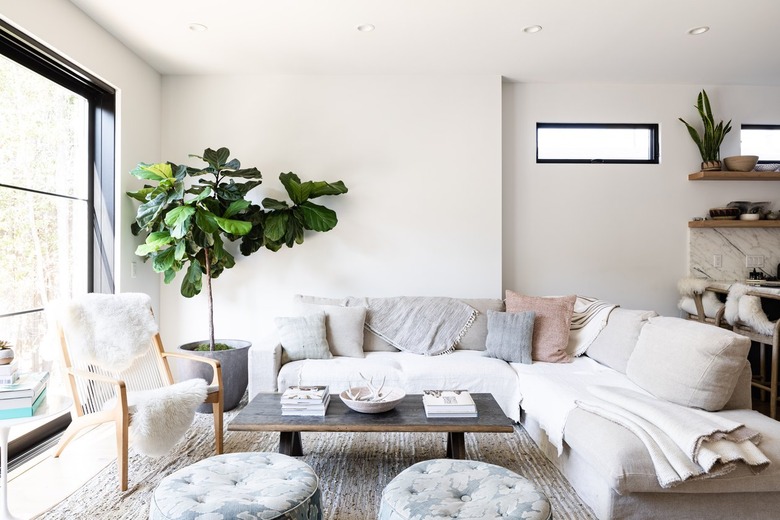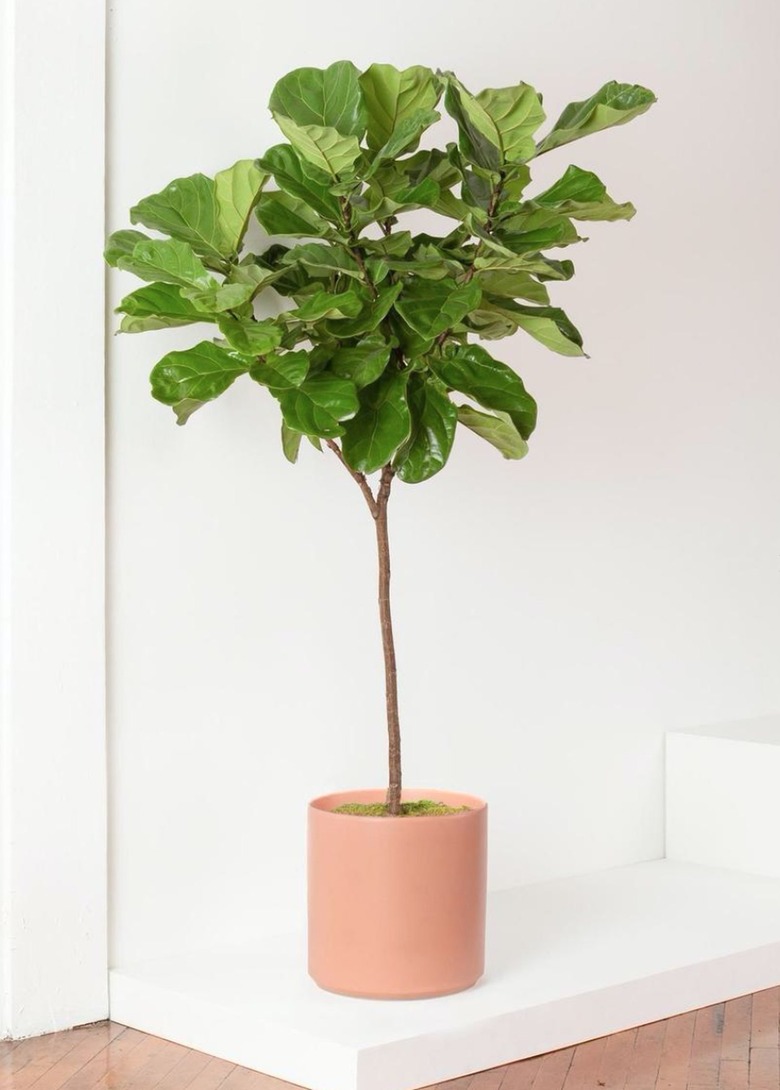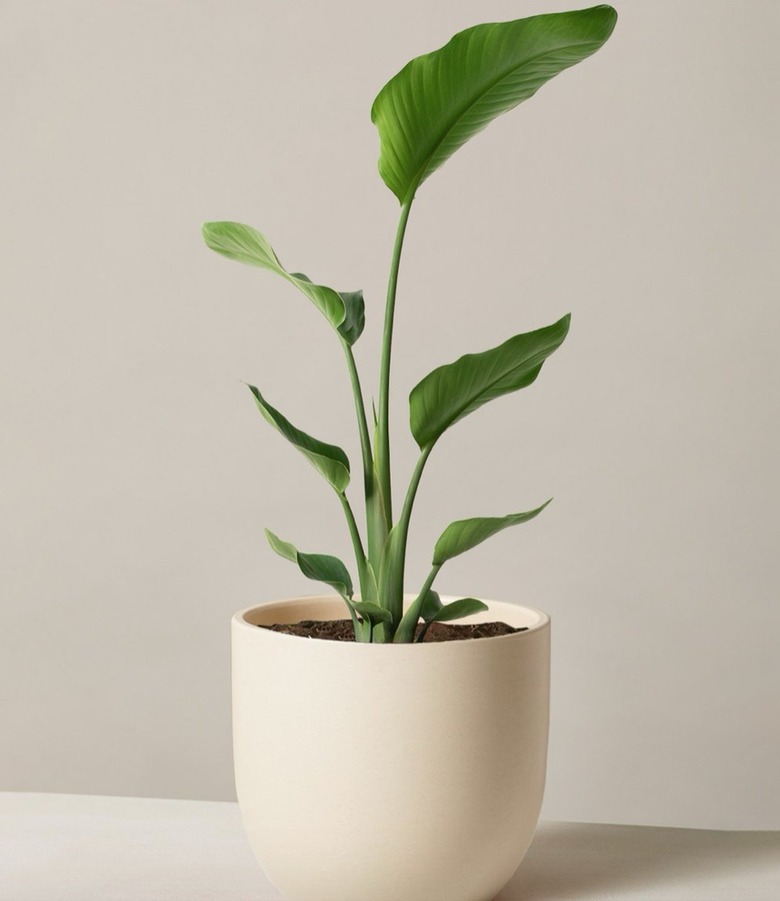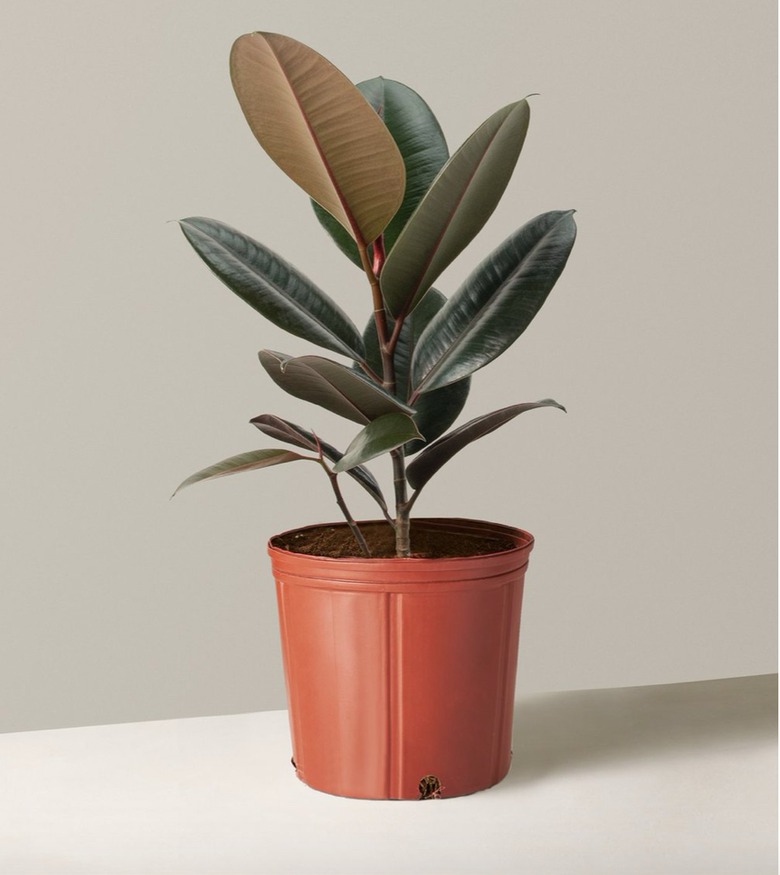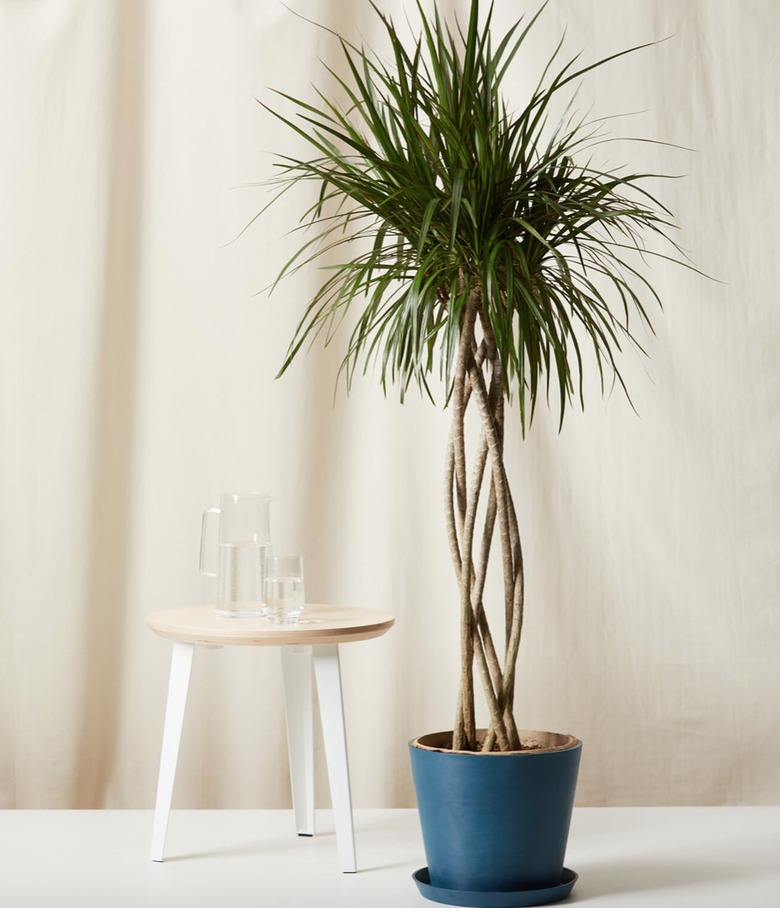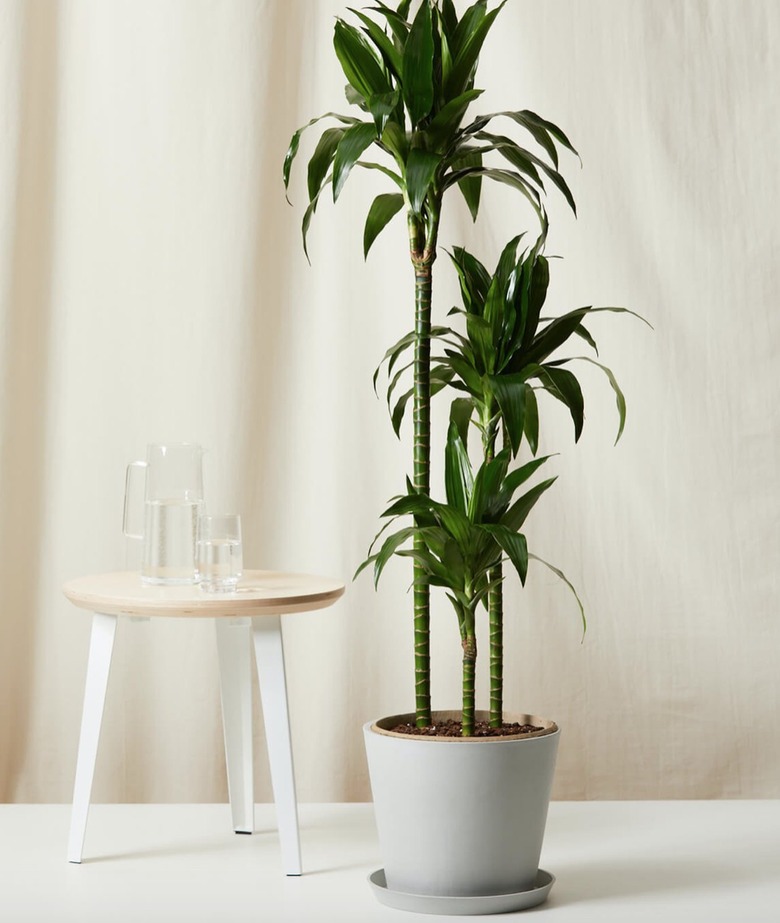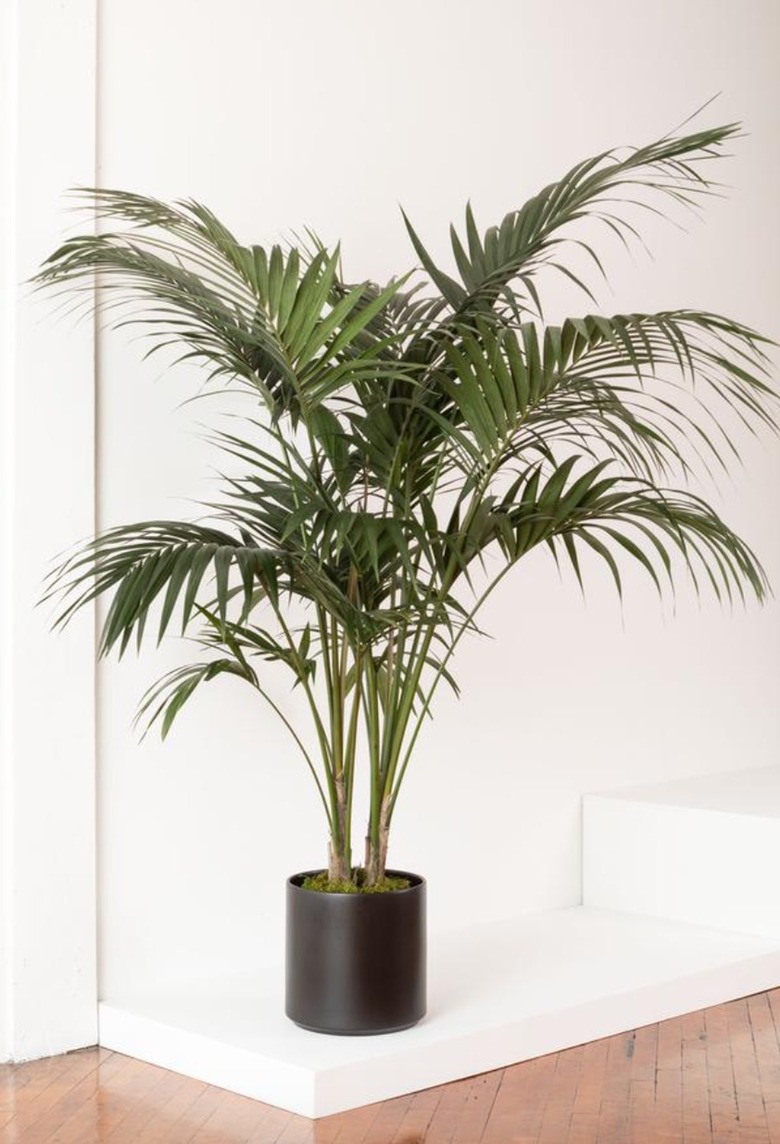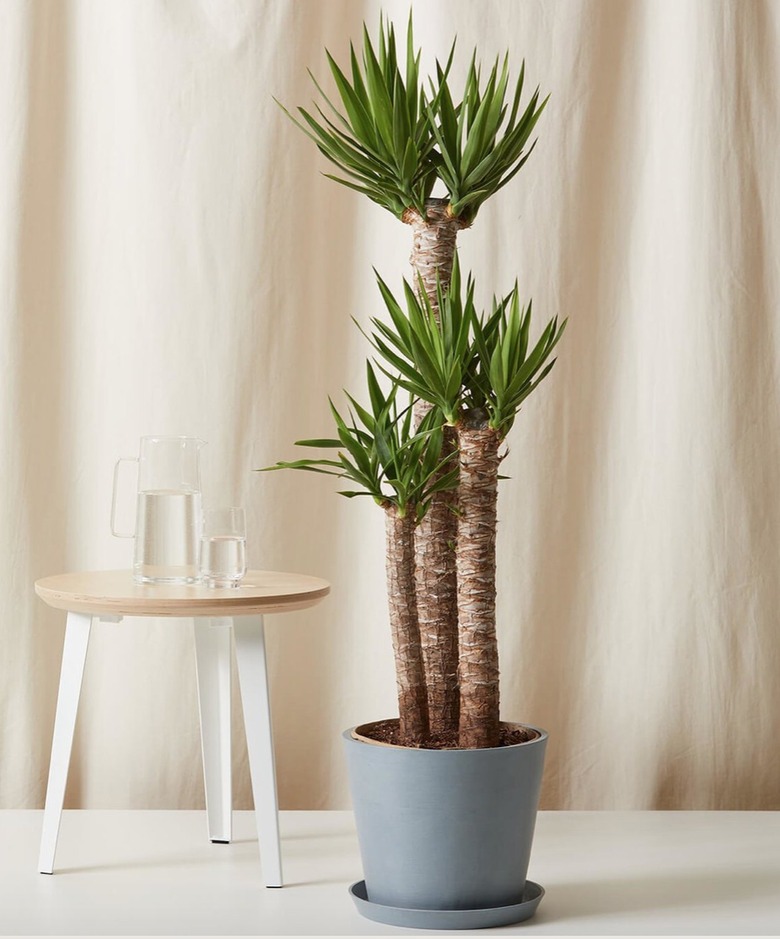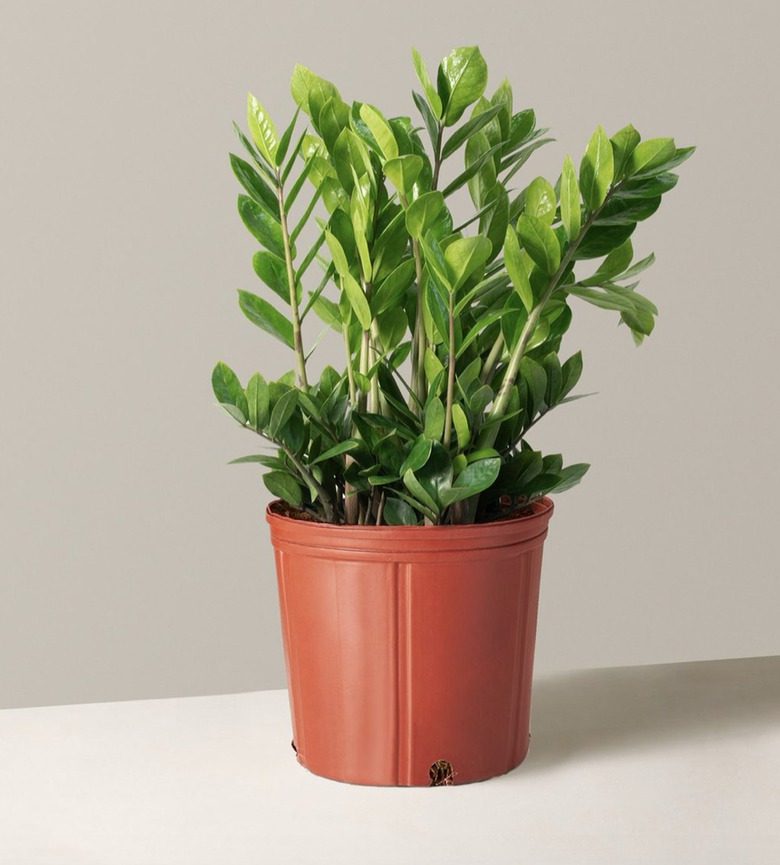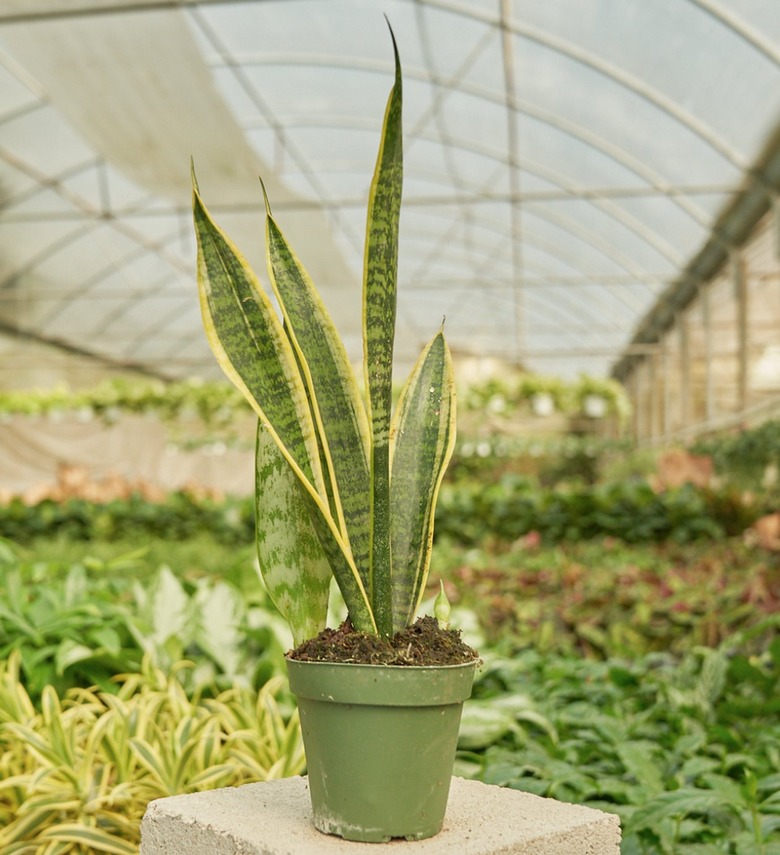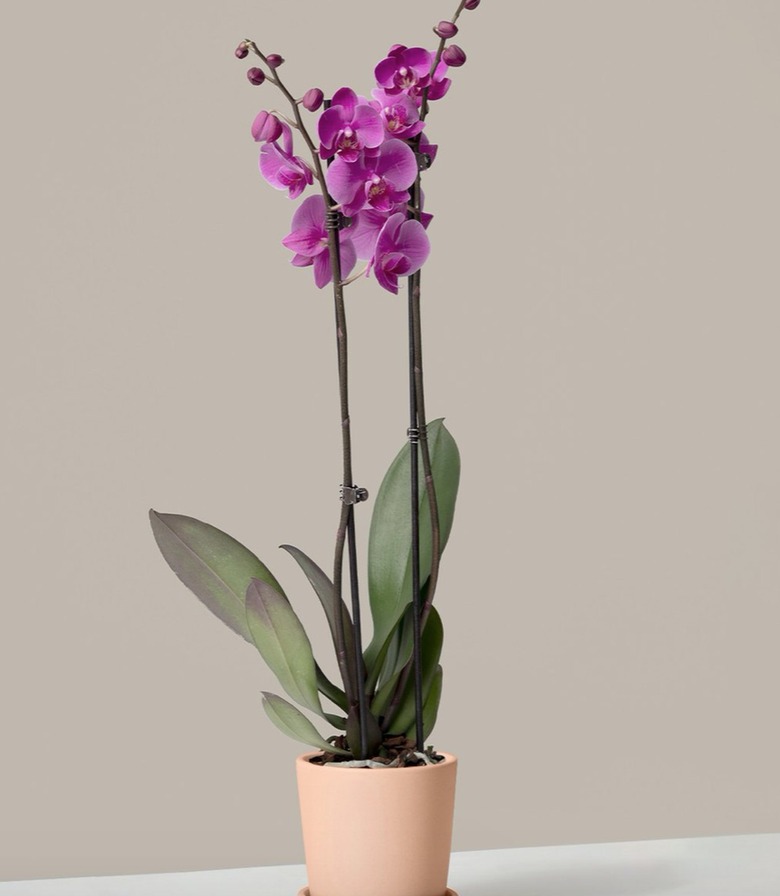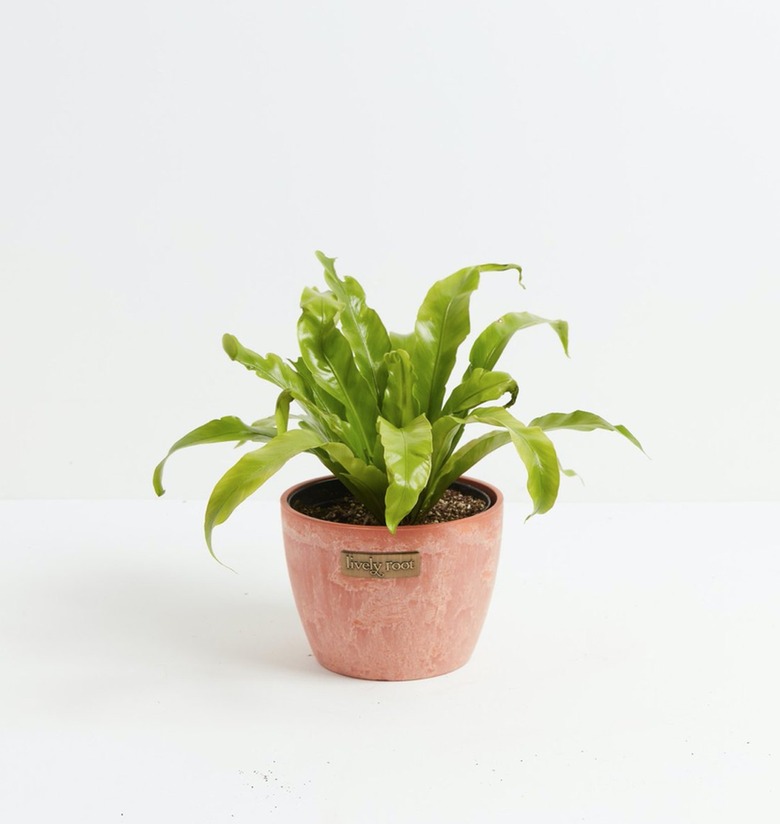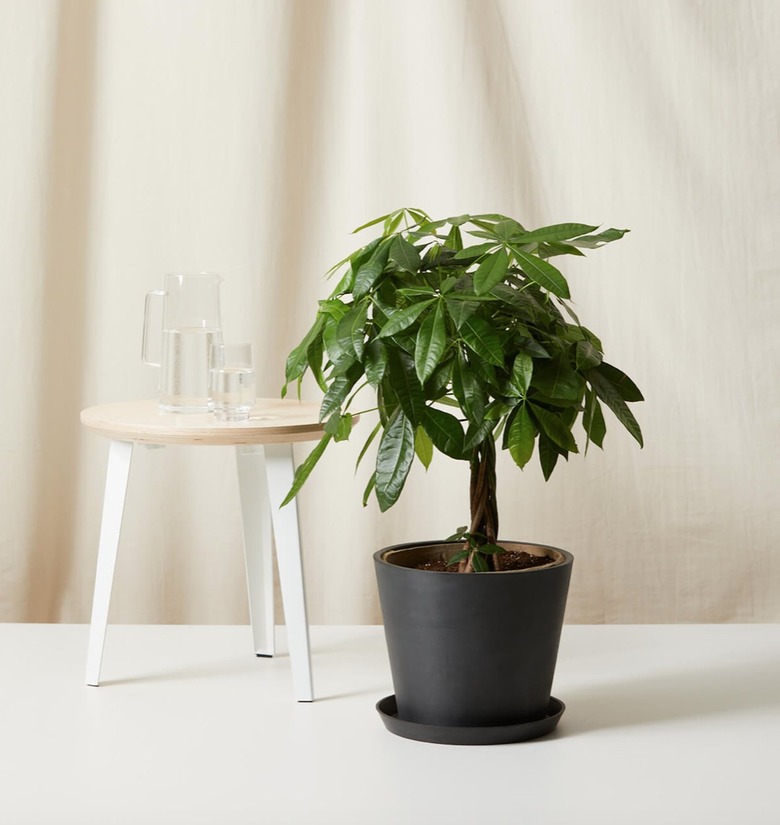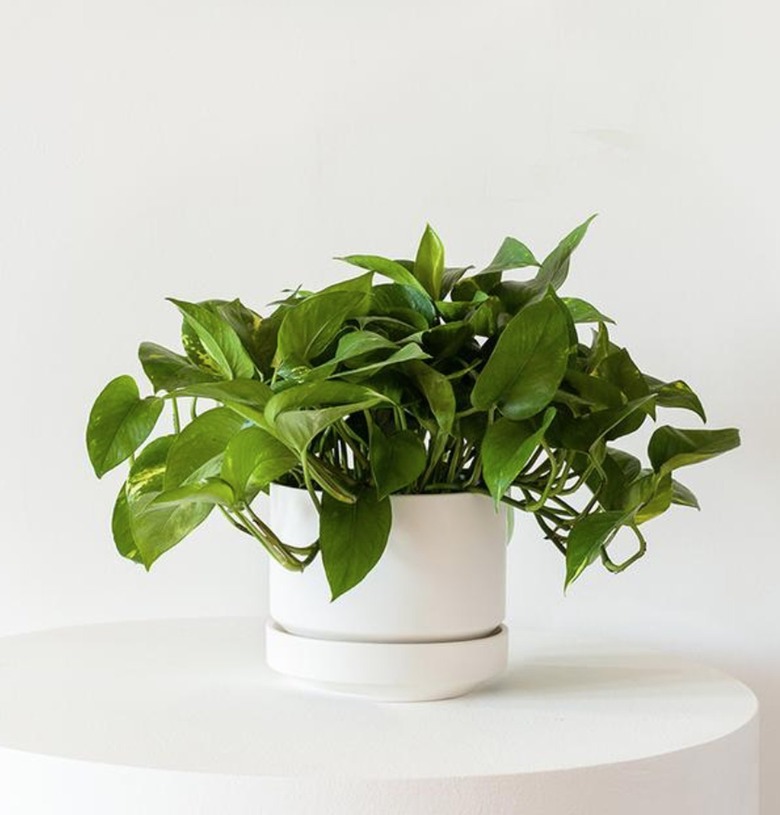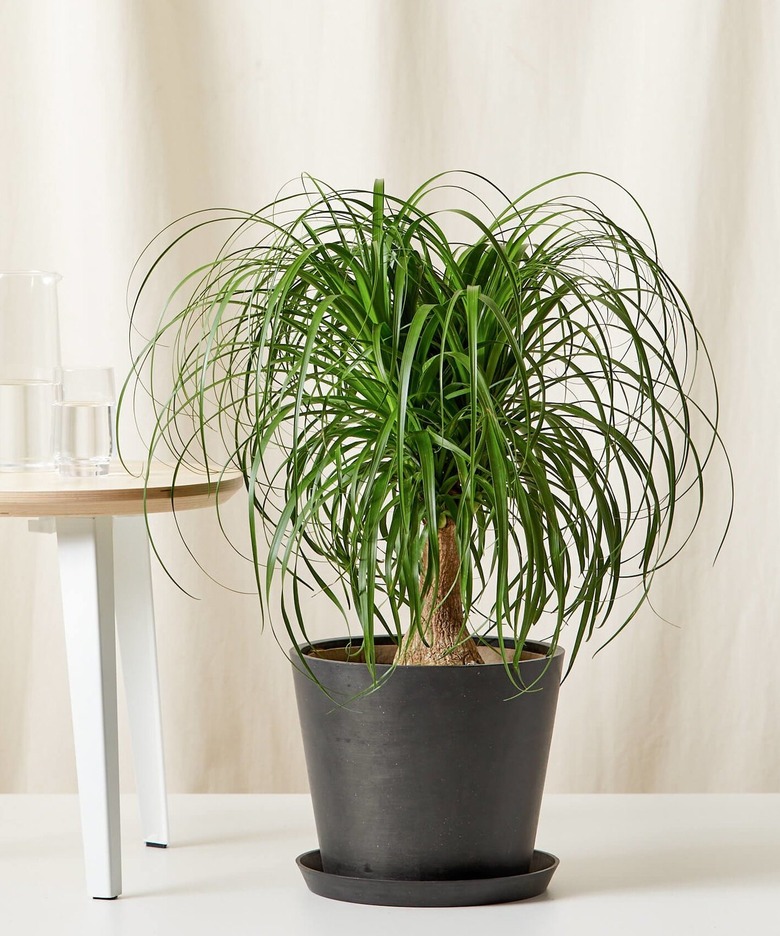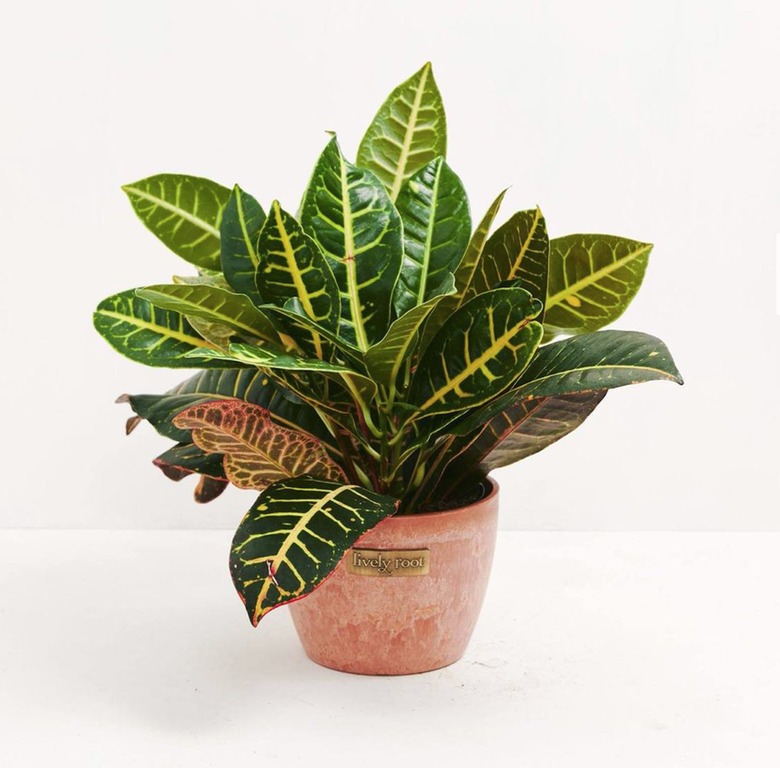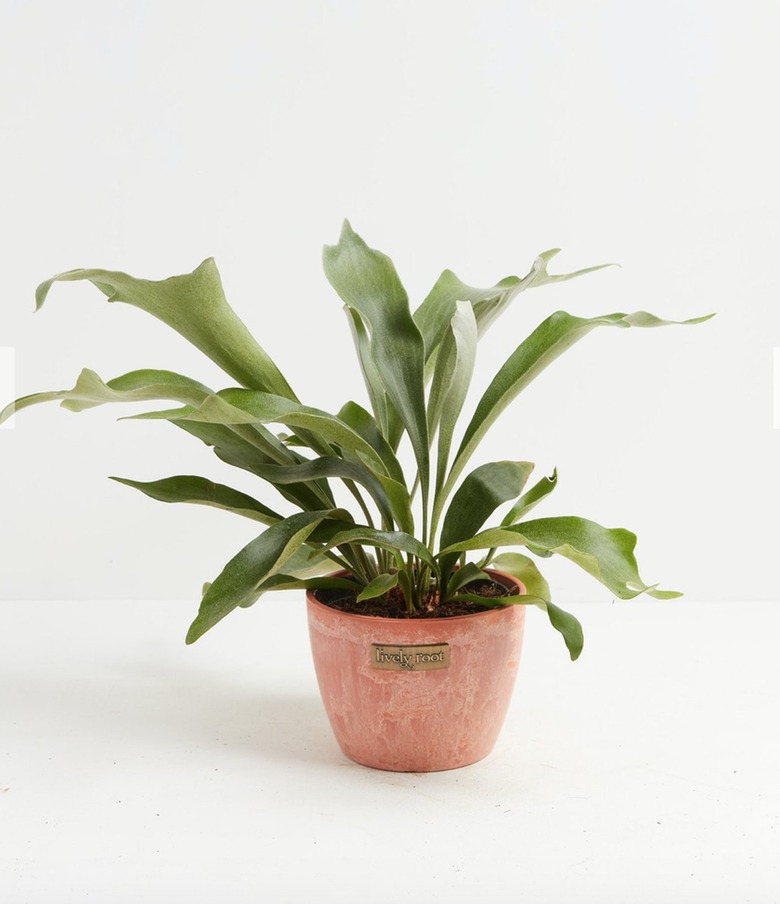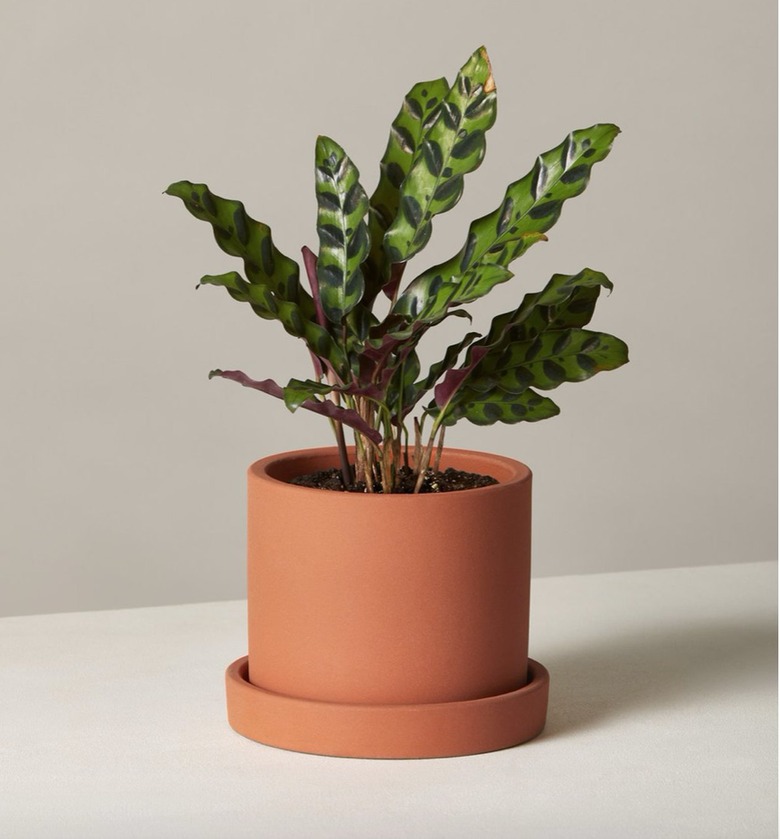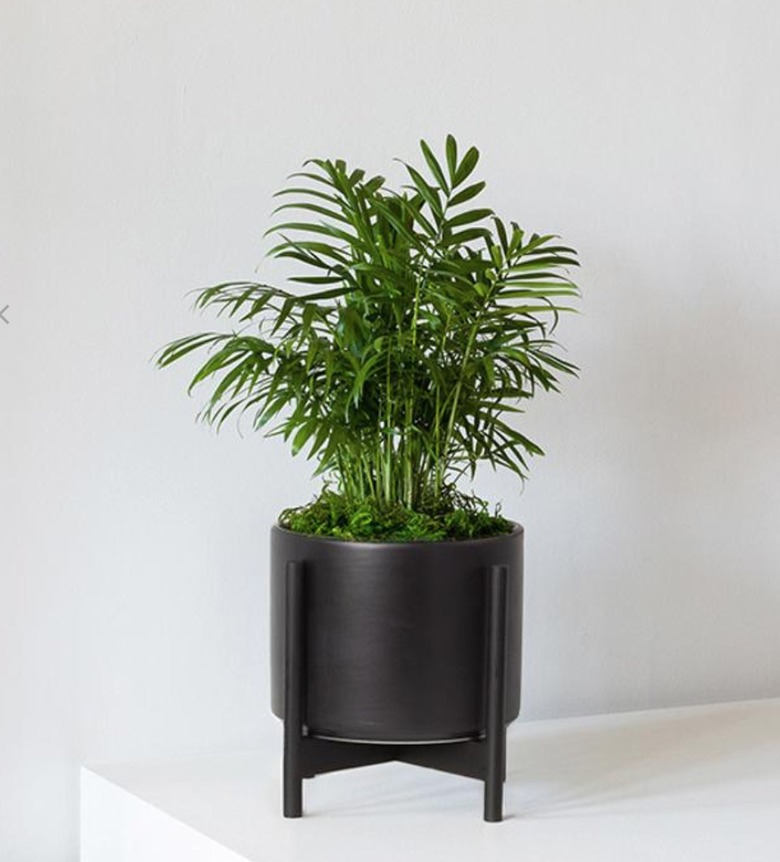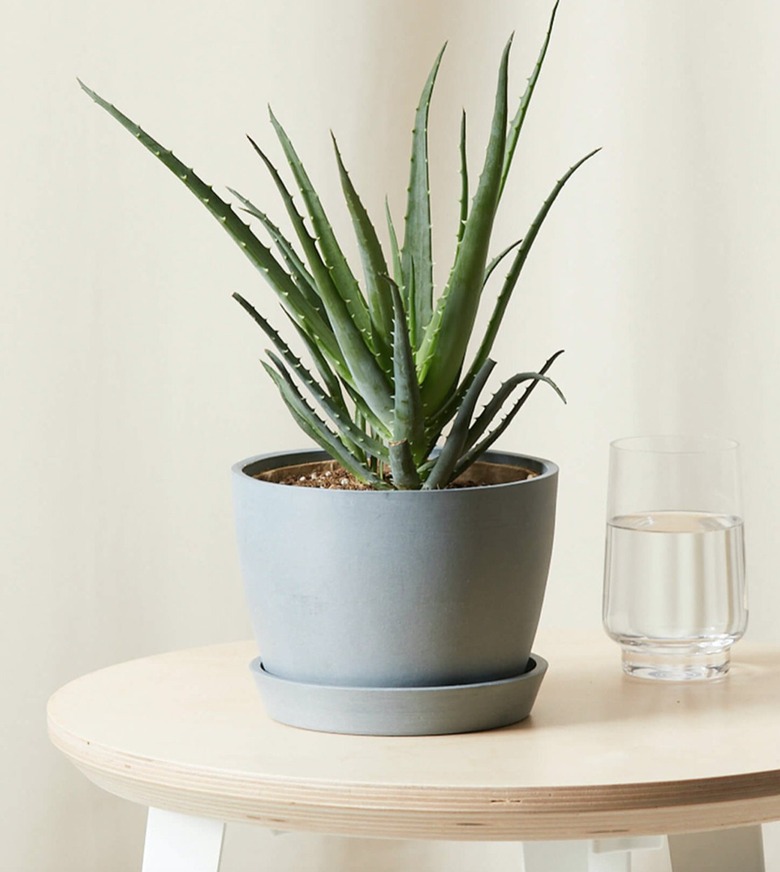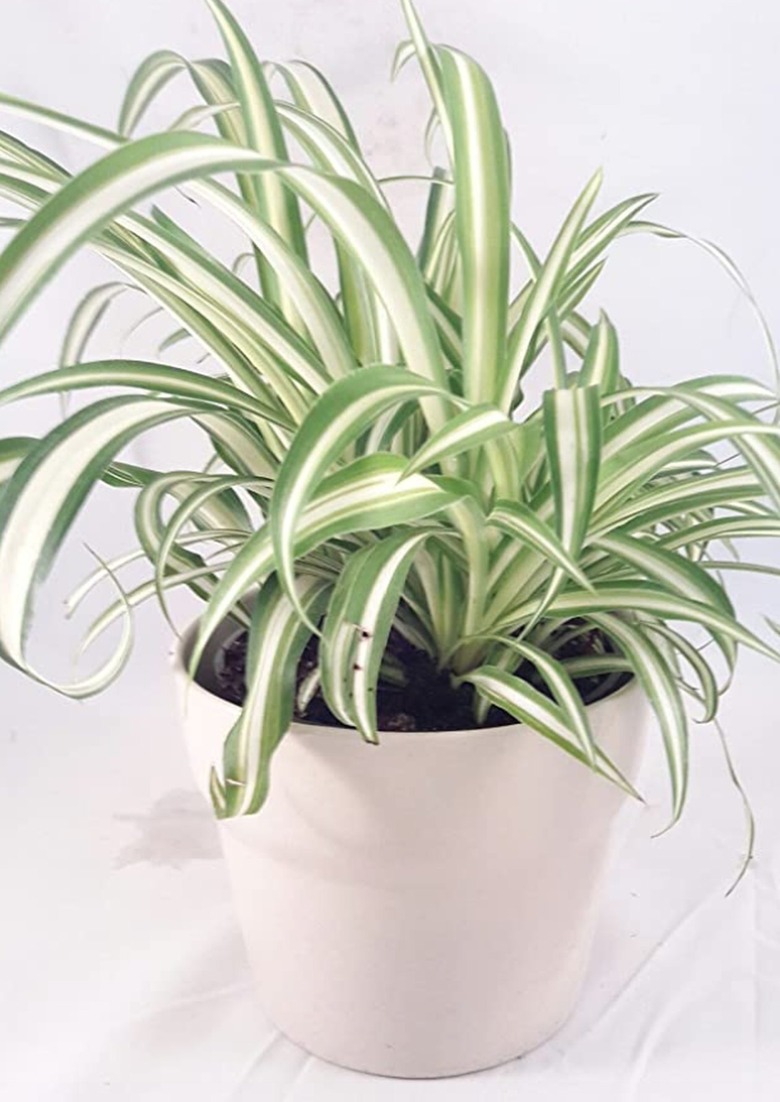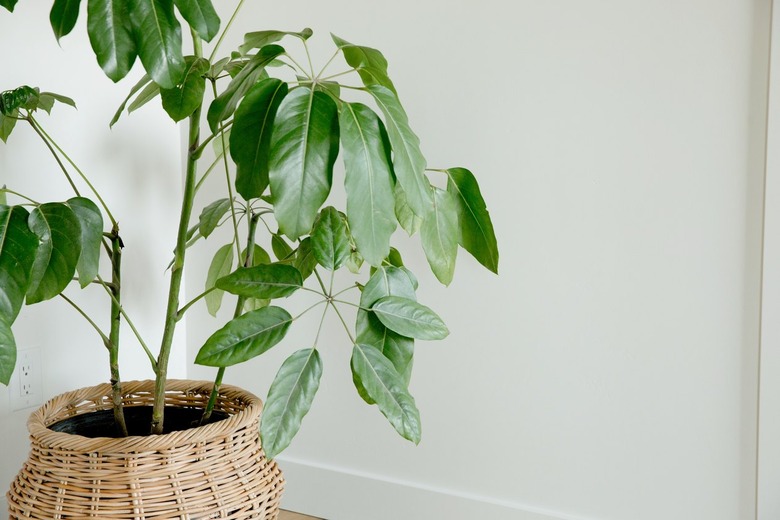21 Types Of Houseplants That Will Add Greenery To Your Home
Even if your home isn't surrounded by rolling hills, you can reap the many benefits of mother nature by including just a few potted plants in your space, and, bonus, you don't need to have a green thumb for them to thrive. Aside from adding color and sculptural interest, houseplants are just plain good for you. Among their many benefits are reducing stress, sharpening focus, decreasing depression and anxiety, boosting productivity, and filtering out dirty air. So, yeah, a little greenery goes a long way.
Like people, houseplants come in a range of shapes, sizes, and colors. Their needs — water, sunlight, and humidity — also vary greatly. Some plants, like the ponytail palm, jade (low-maintenance to boot), and aloe favor direct sunlight, making them ideal for placement on a windowsill. Fill a vacant corner with an endearing fiddle leaf fig (arguably one of the most popular houseplants), a rubber tree, or a tropical bird of paradise. Short on space? A rattlesnake plant or Chinese evergreen will add life without infringing on valuable square footage. And if you're simply looking to add dimension to a coffee table or shelf, succulents with personality include the string of pearls, fish hook, or textured donkey's tale.
Now that you're convinced you need some plants in your life, you'll want to determine where you'd like your verdant foliage to go. How much space do you have? Does the spot receive a lot of natural light? Is it close to an air duct? Do you travel often, making a low-water plant a necessity? Make sure the plant you select is indeed an indoor plant that will thrive in your home. Read on to discover some of the best houseplants, ranging in size from large to small, and a few tips that will help you take care of your new green babies.
Large Houseplants
Large Houseplants
Large houseplants can help ground interiors and add contrast. Generally defined as ranging in size from 32" to 58" tall, they're ideal for filling vacant corners.
1. Fiddle Leaf Fig
Quite possibly the most famous houseplant, the fiddle leaf fig stole the hearts of many design enthusiasts after appearing in countless interior spaces on Instagram. Despite its reputation as a challenging plant to nurture, it's easy to keep alive if it's in the right environment. Don't overwater it — it favors moist, well-draining potting soil over wet dirt. Place it in bright, but indirect sunlight and mist the leaves in winter to recreate its tropical origins. It can grow up to 10 feet tall indoors, infusing drama into lofty spaces.
2. Bird of Paradise
The bird of paradise has broad leaves, giving it a tropical vibe perfect for boho and laid-back interiors. It thrives in bright indirect to direct sunlight (think window sill) and prefer humidity, so keep them away from drafty spots. A hardy and low-maintenance plant, bird of paradise can be watered just once every week or two and does best when planted in well-draining, fertile soil that has organic matter mixed in.
3. Rubber Plant
If you love the look of the fiddle leaf fig but aren't sure you're up to the task of caring for it, its less finicky sister, the rubber tree plant, could be perfect for you. It's a beginner-level plant that needs to be watered once or twice a week — just make sure the topsoil dries out in between. Keep it happy in bright, indirect sunlight and well-drained and well-aerated potting soil. It can grow quite tall — up to 10 feet if space allows — and has broad, deep green leaves, making it a workhorse option in rooms with ample space.
4. Madagascar Dragon Tree
The Madagascar dragon tree is an easy-to-care-for plant, able to grow in either low or bright light. If you're on the go often, this tree is for you — it only needs water when the soil dries out. It favors moderate sunlight, and can survive in almost any type of potting soil. This indoor tree has an eye-catching architectural quality emphasized by intertwining trunks that would complement contemporary or midcentury interiors. And if your home's aesthetic is streamlined or minimal, a Madagascar dragon tree will make an especially welcome impact.
5. Dracaena Elegance
The Dracaena Elegance is ideal for those who want to join the plant world, but aren't sure they can be trusted taking care of one. It's a low-maintenance option that prefers low light, low humidity, and a well-draining, rich soil that's full of organic material. Plus, it only needs to be watered once a week. It's distinguished by broad vibrant leaves, which are a great conversation piece, but will also add interest and color to any room.
6. Kentia Palm
The kentia palm is beloved for its eye-catching fullness and leaves that fan out and impart a lush tropical vibe. It favors medium to bright indirect light and periodic watering only when the top inch or two of soil (sandy, well-draining preferably) is dry. Mist it regularly to increase the humidity level and keep it away from cool spots.
7. Staggered Yucca Cane
With a mostly bare trunk and tufts of sword-like leaves, the staggered yucca cane is an unusual plant with an organic quality and plenty of texture. It grows fastest in bright, indirect sunlight and in soil that's a combination of peat and sand. Mist it occasionally to keep it extra happy. This unique houseplant would act as a great focal point in a soothing neutral space like a living room or bedroom.
Medium Houseplants
Medium Houseplants
Medium houseplants range in size from one to two feet tall, making them appropriate for placement on the floor or on top of a dresser.
8. Zanzibar Gem
Often referred to as the ZZ plant, the Zanzibar gem is a tropical perennial that can grow up to 3 to 4 feet tall, but can be trimmed to maintain a smaller size. It's an easy-to-care-for drought-tolerant plant that prefers moderate sunlight and needs to be watered just every few weeks — perfect for those looking to set it and forget it. The ZZ is partial to average temperatures and should be kept away from cold drafts.
9. Snake Plant
A natural air purifier, the snake plant is ideal for even the most inexperienced gardener. It requires little water or sunlight and can thrive in a variety of spaces from bathrooms to kitchens. And it's prone to root rot if overwatered, so only hydrate when completely dry. We're partial to its thin, upright pointed leaves that are perfectly suited for a narrow or small corner.
10. Orchid
Orchids are elegant houseplants that add sophistication and color to interiors and are often placed on coffee tables or credenzas. They're a bit finicky, preferring temperate surroundings, orchid-specific soil, and bright but indirect sunlight. Its roots need fresh airflow to thrive (so don't replant them in soil that covers them up) and it requires periodic watering. Be sure to let the soil completely dry out before a deep heavy watering, as wet roots can succumb to root rot.
11. Fern
From asparagus to staghorn to Boston, there are a seemingly endless variety of ferns (more than 12,000 to be exact). And while each species has specific needs, there are a few unifying properties to keep in mind when caring for one. It prefers a partially shaded environment, rich, well-draining soil that's kept moist, and most favor humidity. If you're looking to add timeless charm to your home, you can't go wrong with a fern.
12. Money Tree
Invite good fortune and positive energy into your abode with a money tree. It's a hardy plant that enjoys bright to medium indirect sunlight for much of the day. It needs to be watered every week or two, allowing the soil to dry in between to avoid root rot. Use peat-moss-based soil and a pot with good drainage. Most money trees grow with a set of three to five intertwining trunks, which gives them a pleasing sculptural quality. And although it can grow up to six feet tall, a money tree can be trained to remain small.
13. Pothos
With a reputation as one of the easiest plants to care for, the pothos can turn those with the blackest thumb into successful plant growers. It thrives in moist soil, but doesn't need to be watered often and can grow in just about any setting ranging from bright, indirect light to low light. It's a quick-growing trailing plant with whimsical heart-shaped leaves, making it an ideal option for a planter suspended from the ceiling or wall.
14. Ponytail Palm
Playful, with frond-like leaves and a bulbous trunk, the ponytail palm is a conversation piece that adds character to interiors. It's a low-maintenance, hardy succulent that can adapt to different environments and is available in a range of sizes from small to large. Watch it thrive in bright, indirect light and coarse, sandy soil.
Small Houseplants
Small Houseplants
Small houseplants are typically between one to three inches tall. They're ideal for adding a hint of greenery to bookshelves or a coffee table.
15. Golden Petra
Also known as the croton petra, the color and beauty of the golden petra belie its small size and low-maintenance care regimen. It only needs to be watered when the soil feels dry and misted occasionally to recreate a humid environment. It favors bright sunlight, which brings out a range of earthy shades of golden yellow, red, pink, and green, adding a spectrum of color and character wherever it lives.
16. Staghorn Fern
Staghorn ferns come in a variety of sizes, from this scaled-down version to large beauties that are wood-mounted. Named for their fronds, which are reminiscent of deer or elk horns, they're an easy-to-care-for plant that thrives in humid environments and bright, indirect sunlight. The vertically oriented leaves and their unusual shape are a conversation piece that adds height and makes quite the decor statement.
17. Calathea Rattlesnake
The calathea rattlesnake injects color and pattern in a pint-size package. The leaves have alternating bands of light and dark green that resemble reptile skin (thus the name) with a deep aubergine underside. In addition to their unique appearance, the leaves also close slowly at night and open up during the day. Opt for potting soil that can retain some moisture while also providing good drainage.
18. Parlor Palm
The bright green, lush leaves on the parlor palm give it a welcome fullness that's reminiscent of a tropical locale. Mist the leaves in between weekly waterings to create humidity and ensure the soil stays moist, but not soggy. This mighty, but small, houseplant is appropriately sized for a desk or bookshelf and grows best in bright, indirect sunlight.
19. Hedgehog Aloe
The easy-to-care-for hedgehog aloe steals the hearts of novice and experienced plant lovers alike with its small size and ease of care (water just once a month with no additional misting necessary, and place it in direct sunlight). It'll bring sculptural beauty to your home, with its spiky leaves flaunting a subtle blue-green hue. Pair with a traditional cactus and succulent mix, since all succulents like well-draining soil.
20. Spider Plant
The spider plant packs a lot of personality into a small package, imparting a jungle-esque feel to any room thanks to its eye-catching, arching leaves. Maintaining a spider plant is easy — it prefers low humidity, regular misting, and low-to bright indirect sunlight. Water it when the top half of the soil is dry and discard any water that collects in the drainage saucer. A mature spider plant will produce adorable spiderettes or "pup" offshoots that can be clipped and propagated into other plants.
21. String of Pearls
String of pearls is a succulent distinguished by unique cascading round or oval pea-sized balls that add soft lines and texture to interiors. Place them in a hanging basket or planter to really highlight the beads, or allow them to pool around a pot placed on a shelf or coffee table. Like most succulents, they're easy to care for — requiring periodic watering and bright, indirect sunlight and generic succulent potting soil.
Tips for Caring for Houseplants
Tips for Caring for Houseplants
- Light Conditions: All plants need sunlight (it's their food), but not all plants need the same amount of light. Most will do well in bright to moderate indirect sunlight. If leaves turn yellow or brown, there's a good chance they're receiving too much direct light.
- Water: Most plants will be happy being watered once or twice a week, while succulents can go much longer since they store excess water in their leaves. Many tropical plants prefer humid climates and enjoy being misted regularly. Regardless of the plant, avoid overwatering, which can actually be more detrimental than too little water and can contribute to root rot.
- Soil: There is soil that is specific to certain types of plants such as orchids and cacti, but most plants will do well with soil that's aerated and drains well.
- Temperature: Most houseplants thrive in daytime temperatures ranging from 65 to 75 degrees Fahrenheit and are slightly cooler at night. Avoid placing them in drafty spots or directly near AC/heating vents.
- Dust: Dust can accumulate on plant leaves, impeding the absorption of sunlight and preventing photosynthesis from occurring. When dust is visible, place small plants in the sink and spray leaves off with cool (not cold) water or, for larger plants that can't be moved, gently wipe leaves off with a damp cloth.
Invite greenery, beauty, and good health into your home with the addition of houseplants. With a bit of research and effort, anyone, regardless of spatial constraints and maintenance schedule, can reap their many benefits.
